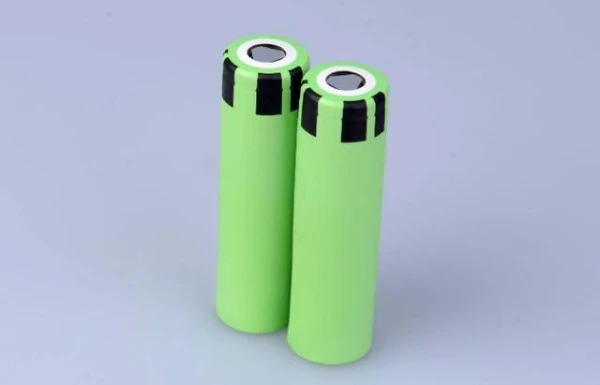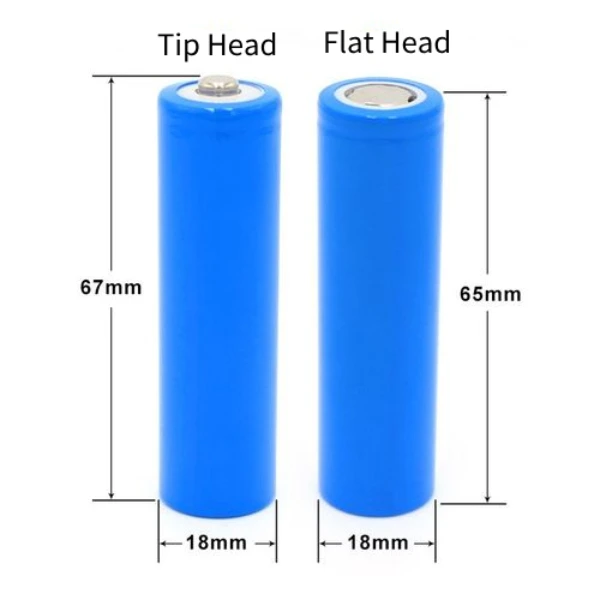18650 lithium battery has a wide range of applications due to its large capacity per unit density. In addition, because the 18650 battery has very good stability at work, it is widely used in various major electronic fields, such as high-end bright flashlights, portable power supplies, wireless data transmitters, electric thermal clothing and shoes, portable instruments, portable Lighting equipment, portable printers, industrial instruments, medical instruments, etc.
So, how do you buy 18650 lithium-ion batteries? Choose the 18650 lithium battery that best suits you based on our electrical equipment, such as the appropriate brand, voltage, capacity, continuous discharge rate, battery life, etc. The most important thing is to choose a battery that is high-safe. Below, we will introduce them in detail.

1. Battery type
18650 lithium batteries are mainly divided into three types: lithium manganate battery (LiMn2O4), lithium cobalt oxide battery (LiCoO2), and ternary material lithium battery (Li(NiCoMn)O2). Different types of batteries have different performance characteristics, and you can choose the appropriate type according to your needs.
2. Capacity
One of the most important considerations when buying an 18650 lithium battery is its capacity. 18650 battery capacity is measured in milliampere hours (mAh). Capacity refers to the amount of charge a battery can store, usually expressed in milliamp hours (mAh) units. Higher capacity means the battery can last longer.
This is important because you need a battery with enough charge to power your device. The 18650 lithium battery has a capacity of up to 3000 mAh, enough to power most devices for several hours. If you are looking for a battery that can power your device for a long time, choose a battery with a higher capacity. However, remember that batteries with higher capacity tend to be more expensive. Ultimately, your best 18650 lithium-ion battery will depend on your specific needs and budget.
3. Continuous discharge current (CDR)
The C number expresses continuous discharge capability. Continuous discharge current = continuous discharge capacity C number × capacity. For example, if the capacity of an 18650 battery is 2800mAh and the continuous discharge capacity is 0.5C, then the continuous discharge current = 1.4A. Discharging over 1.4A for a long time will seriously affect the battery life. It may cause overheating, even burning, explosion, and other dangers.
4. Internal resistance
Internal resistance is the resistance of the battery itself. The smaller the internal resistance, the less its consumption and the stronger the discharge capability. The internal resistance parameter is usually written on the battery introduction page, so you should pay attention to it when purchasing. Try not to buy 18650 batteries with more than 100mΩ. The smaller the internal resistance, the stronger the battery’s discharge capability. Generally, the internal resistance of high-quality batteries is 12~15mΩ.
When using multiple 18650 battery packs in series, buy 18650 battery cells of the same brand and model. Otherwise, the battery cells with high internal resistance and low capacity will become the shortcomings of the entire 18650 battery pack.
5. Temperature
Temperature is a major factor affecting the life of an 18650 lithium battery. The higher the temperature, the faster the battery will age. The higher the temperature, the greater the damage to the battery’s interior.
6. Tip head and flat head
18650 lithium batteries are also available in flat and pointed ends. As shown in the picture below, the positive electrode on the left has a protruding tip. The positive electrode on the right has no protruding part and is flat. Under normal circumstances, it is recommended to buy pointed batteries to ensure compatibility with more devices and uses.

Usually, the positive and negative poles of flashlights are designed with springs that can be retracted. Both pointed and flat batteries can be used. But suppose you want to use flat-head batteries in series. In that case, the positive terminal of the flat head cannot contact the negative terminal of another battery.
7. With protection board and without PCB
The pointed 18650 battery has a PCB, and the flat 18650 battery does not have a PCB. The 18650 lithium battery with PCB is a few mm taller than the 18650 lithium battery without PCB, and the price is slightly more expensive. However, the 18650 battery with PCB is safer and more versatile. In addition, the 18650 lithium battery with a protective plate can prevent the battery from over-discharging. Over-discharge will cause the lithium battery to heat up, burn, explode, and cause other dangers.
An 18650 battery with a PCB is not enough; a high-quality protection circuit board should also be connected. Like Ufine Battery’s 18650 battery, it has overcharge, over-discharge, over-current, short-circuit, temperature, internal resistance, power consumption, and other protection functions that a good battery PCB should have. Therefore, when purchasing, we must choose high-quality lithium battery PCB to ensure the safety of lithium batteries.
8. Brand and quality
Choosing the well-known 1860 battery brand can provide more reliable quality and performance. Please choose a manufacturer or supplier with a good reputation, such as Ufine Battery. And make sure the batteries you buy meet relevant safety standards.
9. Security
You should also pay attention to the safety performance of the 18650 battery, such as whether it has safety functions such as overcharge protection, over-discharge protection, and short-circuit protection. These features can effectively prevent potential security risks.
10. Price
Consider the price of batteries based on your budget. Price is usually related to brand, capacity, and quality; choose products with a higher price ratio.
Summary
In general, when choosing 18650 batteries, you should comprehensively consider capacity, internal resistance, discharge current, temperature adaptability, and battery type, choose a battery supplier with a good reputation and reliable quality, and check relevant certifications and parameters.
In addition to the above factors, you can also refer to the reviews and reviews of other users to understand the real performance and user experience of different brands and models of 18650 lithium batteries.
Finally, when purchasing batteries, purchase them from authorized sources and follow relevant safe use and disposal guidelines.
Related Tags:
More Articles

Overview of Deep Cycle Lithium Battery
In this article, we explore the life, voltage, capacity, and charging considerations of deep cycle lithium batteries.
How Long do Lithium Batteries Last?
How long do lithium batteries last? we will explore the factors that influence the lifespan of lithium batteries and provide insights into their longevity.
How to Choose the Best LiFePO4 Battery?
Choose LiFePO4 batteries for superior performance, safety, and versatility in EVs, UPS, and backup power. This guide helps you make informed decisions.
Get 12v Lithium Car Battery As a Power Source for the Ride
Make the right choice for your vehicle's battery needs by installing a 12 volt lithium car battery. You will enjoy maintenance-free longevity with this change.
Everything About A Small Lithium Ion Battery
Discover the features, uses & future potential of a small lithium ion battery. A compact and tiny powerhouse ideal for smartphones, wearables, drones & more.





